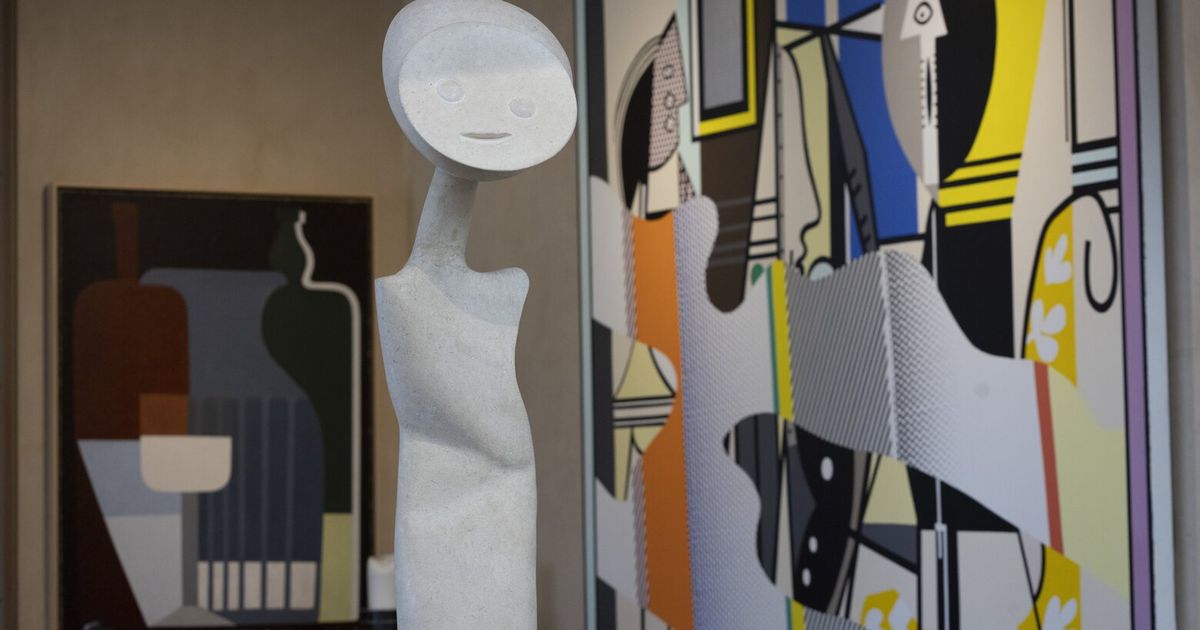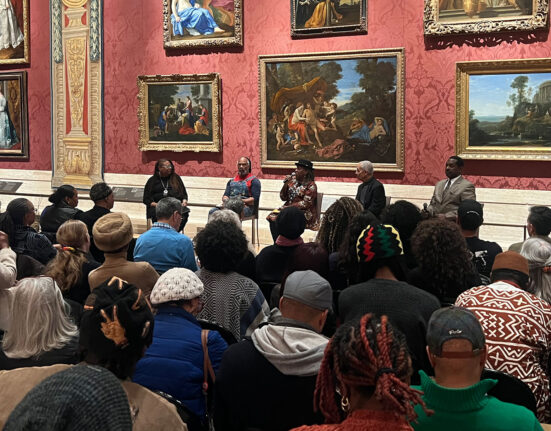You could teach an art history course with what’s in Richard “Dick” Hedreen’s home. The Seattle hotel and real estate developer’s house feels like a museum. A who’s who of 20th-century art — Willem de Kooning, Sam Francis, Lucian Freud — greets visitors from the walls of the grand and airy hallway. In the living room, pop art rubs shoulders with a nearly 2,000-year-old marble sculpture, contemporary paintings and a stately oil portrait from the 1700s. Featured in the bedroom: a rustic tableau by the famed 19th-century realist Gustave Courbet. And that portrait over there? That’s a Pontormo.
Now, Hedreen, 88, is gifting his entire collection, comprising more than 200 artworks and estimated to be worth about $300 million, to Seattle University. He’s also donating $25 million in seed funding to develop a museum to house the collection. According to the university, the donation — in honor of Hedreen’s late wife and Seattle U alum Betty — is the largest gift of art ever made to a college. It is also the most significant single gift ever made to a university in Washington state and the largest gift of any kind in Seattle U’s 133-year history, the university said.
The gift is notable not just because of its size. It’s also remarkable because in recent years, other significant collections, like that of the late Microsoft co-founder Paul Allen and Seattle travel magnate Barney A. Ebsworth, have been dispersed through auction sales rather than remaining in the city or becoming available to the public.
The university, a nonprofit Jesuit school, plans to build the museum, currently named the Seattle University Museum of Art, on its Capitol Hill campus, likely on a plot abutting 12th Avenue next to the Lee Center for the Arts. The art collection, which includes paintings, sculptures and photos, will be transferred to the university once the museum is built and ready to receive it.
The collection — which spans more than six centuries and contains prime examples of Western art history — will serve as a resource for students, faculty and art enthusiasts across the city, said Seattle University President Eduardo Peñalver. “I think it’s a win-win for Seattle University and for Seattle,” he said.
In a recent interview, Hedreen echoed Peñalver’s comments. “I hope it’ll raise up Seattle University,” he said, sitting in his living room near a massive, collagelike painting by pop art icon Roy Lichtenstein and a lithe, limestone Max Ernst statue. “I think it’ll be a nice thing for the city.”
Hedreen said there are several reasons for the donation, some of which are financial. If the art were part of his estate, he’d pay a significant amount in taxes, he noted. “That seems to me to be too generous to the state.”
But the gift is also profoundly personal, he said. He amassed his collection with his late wife, Elizabeth “Betty” Ann Petri Hedreen, a noted arts philanthropist who attended Seattle University and died in 2022.
Hedreen also cited his time as a freshman at Seattle Prep, the Capitol Hill Jesuit high school. “They introduced me to poetry, we read Shakespeare… the visual arts were important,” he said. He later became an engineer, but “I never forgot the educators that the Jesuits were.” During his time at the University of Washington, he met Betty, then a Seattle U student.
In the early 1960s, Hedreen founded the development company R.C. Hedreen Co. (now known for major local hotels like the Hilton and Hyatt Regency). The Hedreens started collecting a few years later. The couple initially chose “regional paintings” to decorate their house but soon broadened their scope.
In the following decades, they purchased artwork at galleries and auction houses in New York, California, Chicago and Europe, scooping up paintings by famed and historic artists like Titian and Jan Lievens as well as 20th-century photos by Henri Cartier-Bresson, Irving Penn and Andy Warhol, plus contemporary art by living painters like Amy Sherald, Cecily Brown, Tomma Abts and Rashid Johnson. Some of the most recent works in the collection are basically brand-new, created in 2022.
Barrett White, executive deputy chairman of Post-War and Contemporary Art at Christie’s, the auction house that appraised the collection at $300 million, touted its historical breadth. He also praised Hedreen’s “inextinguishable intellectual curiosity and connoisseurship.”
“It is one of the great collections in America,” White said. “It will be an incredible addition to the city of Seattle.”
The Hedreens were longtime supporters of Seattle arts. Over the years, they donated many artworks to Seattle U and provided funding for two significant structures on campus: the university’s Chapel of Saint Ignatius, designed by the famed architect Steven Holl, and the Lee Center for the Arts.
Betty Hedreen was also an important supporter of the Seattle Art Museum. She served many years on the museum’s board of trustees and was elected honorary trustee for life in 2017. The couple also donated multiple high-profile pieces of art to the institution.
So why didn’t the Hedreen collection go to SAM, Seattle’s foremost art museum?
Richard Hedreen said he wanted to honor his wife’s alma mater. Other reasons factored into his decision: “I like having the collection stay together. Because it says something about the collector.” And, he added, “I don’t like the idea of the art being in storage.”
To this end, donating to a college rather than a well-known museum makes sense. In general, major museums already have so much high-quality art they can often only display a fraction of donated, and even their own, collections. Many artworks may rarely — if ever — make it out of storage.
For those reasons, art collectors increasingly turn to colleges rather than well-known art museums to safeguard their treasure troves. While perhaps a less obvious or prestigious choice, it can increase the chances of the work being seen and studied.
That’s true for the Hedreens’ gift, too: The collection will be used as a teaching tool and serve as a jumping-off point for research. Hedreen named famed East Coast “teaching museums” at Williams College (where his son and daughter-in-law teach art history), Vassar College, Harvard and Yale as leading examples.
While Seattle University claims the Hedreen donation is the largest single gift ever made to a college, the math can be complicated, partly because art collections often increase in value and dollar values change over time. In 2008, the Harvard Art Museum received a collection of 31 artworks then valued at $200 million.
And sometimes, information is simply not public: The University of Texas at Dallas and Princeton, for example, have received sizable donations of art in recent years, but university representatives either did not respond or declined to share these collections’ valuations.
Still, it is undoubtedly one of the most substantial gifts of art to a college in history.
What’s also certain: At the Seattle University Museum of Art, the Hedreen collection will largely remain on view in a permanent gallery. The museum will also contain a wing of Northwest art, which will showcase a trove of modern and contemporary local art recently bequeathed to the university by Seattle artists Dennis Evans and Nancy Mee, alongside gifts from other donors and works by other artists. There will also be space for visiting or rotating exhibits, Peñalver said, though he noted much would be up to the museum’s curator.
But first, they’ll need to build a structure. Hedreen said the building could be designed by architect Tom Kundig. (The university confirmed it’s been in discussions with Kundig and hopes to make an announcement soon.)
The timeline is still unclear, but the hope is to start construction as soon as possible. The expectation is that the building should take about three to five years to complete. In the meantime, the university will be fundraising for the project.
“He’d very much like to see it,” Peñalver said about Hedreen. “So we want to get it done as quickly as we can.”
_____
This coverage is partially underwritten by the M.J. Murdock Charitable Trust. The funder plays no role in editorial decision making and The Seattle Times maintains editorial control over this and all its coverage.






